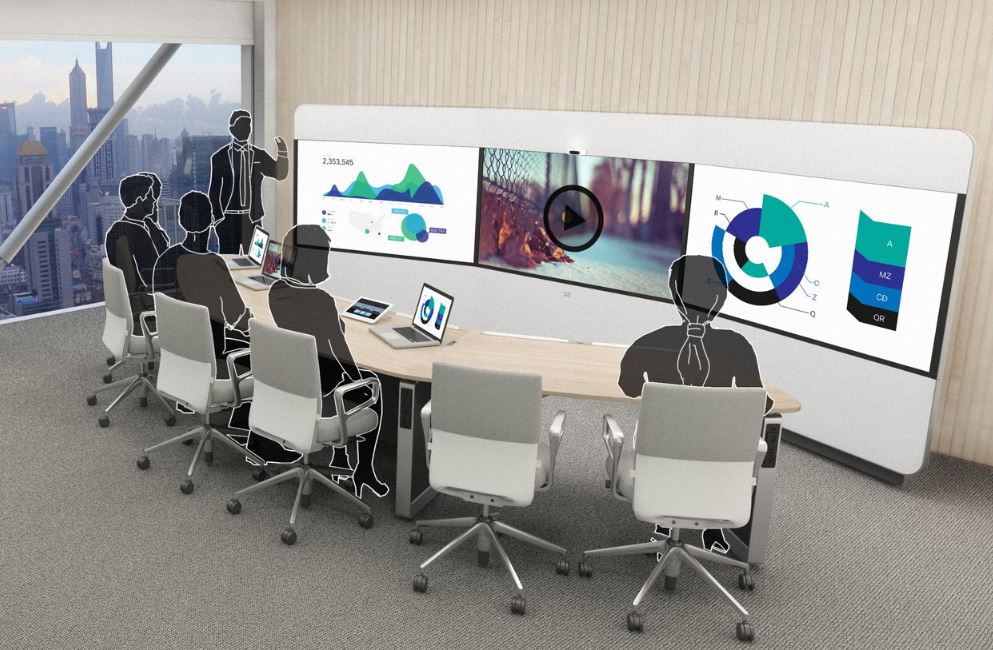Efficiency in Product Design and Development: The Manufacturing Industry and Video Collaboration

Manufacturing is a vital component of yesterday’s, today’s and tomorrow’s world. Although demand and output is continually evolving and the industry is hugely diverse, the global manufacturing industry continues to contribute approximately 16% of global GDP and 14% of global employment, and output from this sector is critical for both the developed and developing world alike.
Whilst highly effected by changes and the evolution of other global industries, the manufacturing sector has a number of key objectives that remain intact throughout – producing industry leading solutions, staying competitive, growing innovation, reducing costs, and speeding up time-to-market.
So how does Video Conferencing and Collaboration assist within achieving these key objectives? Let’s take a look at how Collaboration and Video Conferencing in manufacturing can help Accelerate Design and Development.
Globalisation of Manufacturing
The continued globalisation of the manufacturing industry is transforming the way businesses interact, with organisations positioning operations internationally, often dependent upon where a  particular stage of the process can be completed at the lowest cost. It is increasingly the case that the less skill-intensive parts of the process are being outsourced to less developed countries, with organisations taking advantage of the lower labour costs, whilst using the skills and experience within the developed world to grow innovation and commercialise successful innovations more efficiently.
particular stage of the process can be completed at the lowest cost. It is increasingly the case that the less skill-intensive parts of the process are being outsourced to less developed countries, with organisations taking advantage of the lower labour costs, whilst using the skills and experience within the developed world to grow innovation and commercialise successful innovations more efficiently.
With this broad international supply chain of design facilities, plants, warehouses and offices, coordination of design and development has become a challenge in itself, and combined with the need to speed time-to-market and development cycles, the industry is seeing the fast implementation of tools and technologies to assist. Improved ERP software, further automation of production lines, hi-tech CAD and modelling, technology based on the “Internet of Things” and visual collaboration via SaaS are just some of the key trends to improve productivity and reduce costs throughout design, development and the entire end-to-end manufacturing process.
Using Cisco Video Conferencing technology to connect across the globe, from boardroom to boardroom
Utilising Video Collaboration
The implementation of Video Collaboration solutions within any industry assists much more highly collaborative working practices, enabling intuitive delivery of information between locations worldwide, and improves the speed at which this information is delivered to the supply chain.  The impact of this is a reduced product development time and can be directly related to reduced time -to-market. Changes to product designs can be demonstrated via simulations and easily discussed and shared at a moments notice, without the need for national or international travel.
The impact of this is a reduced product development time and can be directly related to reduced time -to-market. Changes to product designs can be demonstrated via simulations and easily discussed and shared at a moments notice, without the need for national or international travel.
Arriving quickly at decisions between a manufacturer and a client, and sharing this with the manufacturing chain efficiently via just audio or email communications is often difficult to achieve. There is not only the issue of losing the face-to-face interaction that enables better relationships, understanding and communications between parties, but also the inability to successfully share visual information, and discuss data, drawings, diagrams and models that are the back bone to the project.
Through the implementation of Video Collaboration, discussions throughout the chain can be held on a much more regular basis and in a much more productive manner, reducing the critical-path time (MCT) of the whole manufacturing process. Those managing the physical development of the solution receive better insights into modifications without effecting the time-to-market, and time savings during the development can be “passed back” to the design stage to ensure improved quality and innovation, without increased costs.
In fact, Video Collaboration solutions in the manufacturing industry helps reduce time-to-market by an average of 24%.

BAUER Manufacturing: A real world Example
Part of the BAUER group, BAUER Manufacturing is an international manufacturer producing equipment for construction and engineering, including irrigation and wastewater machinery, drilling rigs, cranes, hydraulic and mechanical components, alongside design, manufacturing and services in fields including Steel Structures and Surface Treatment.
BAUER Manufacturing recognised the need to improve teamwork, enhance productivity and make their business more agile & faster-to-market, however the organisation found it was communicating in a very old-fashioned way, with many hours wasted travelling and a lack of high quality communications when not.
Cisco SX10 with Cisco Cloud based Virtual Meeting Rooms and mobile connectivity via Spark
When BAUER’s phone system expired, it was proposed that something much better could be in place, to help the organisation reach it’s business goals. Through the implementation of a Cloud-based collaboration system from Cisco, with SX series video endpoints and Virtual Meeting Rooms made available at numerous sites, the benefits of this improved communication system started to show through.
Firstly, BAUER recognised the fact that employees could now more quickly and easily hold virtual meetings and share papers, plans and visuals via their Cisco CMR (Collaboration Meeting Rooms), meaning less travel and more time spending getting work done.
“You don’t need to spend 6 hours in a car to attend a meeting. When people get together, the discussion is interactive and effective. Travel costs have dropped by 50%”
– Andreas Schitter, CFO at BAUER
BAUER has also recognised the improvements to their speed-to-market, and have recognised they are now getting to market 10% quicker than previously, giving them a huge advantage over competitors. Other measured improvements for BAUER include a 10% increase in employee satisfaction and a huge 30% increase in productivity through people meeting via video and not travelling. Read the full BAUER Customer Story here >>
More Information?
There are many manufacturing organisations utilising video conferencing and collaboration tools to improve efficiency in product design and development, alongside and accelerating time-to-market and greatly reducing costs across the workforce. Solutions from the likes of Cisco, Polycom and Lifesize ensure UK based and global manufacturers can stay ahead of the competition, whilst greatly improving both the top and bottom line.
VideoCentric have over 15 years’ experience of the challenges and needs of organisations within the Manufacturing industry, with a customer base of manufacturers including leading organisations such as Babcock, OCS, Bosch, Dyson and MAN. Visit our Manufacturing Sector Solutions page, or Contact us today to find out more!
Some of VideoCentric’s previous manufacturing industry customers
For more information on solutions for the Manufacturing industry, or to discuss your business goals and challenges to see what might work for your business, contact us today, or find out more via the links below.
- The use of Video Conferencing in the Manufacturing Industry (VideoCentric Blog)
- Globalisation and IT among key trends to impact on the Manufacturing Industry (Recruitment International website)
- 4 Benefits of Reducing Product Development time through Digital Manufacturing (pddnet.com)
- Can Video Conferencing up your productivity and reduce costs? (ComputerWeekly.com)
- Video Conferencing solutions for Manufacturing and Engineering (VideoCentric solutions)




Another well written piece and another good reason to use VC!
A good read Emily!